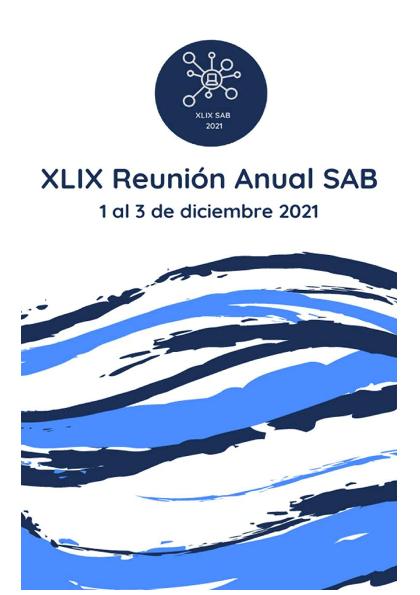Mostrar el registro sencillo del ítem
dc.contributor.author
Munafó, Juan Pablo

dc.contributor.author
Fabiani, Camila

dc.contributor.author
Biscussi, Brunella

dc.contributor.author
Murray, Ana Paula

dc.contributor.author
Antollini, Silvia Susana

dc.date.available
2023-03-13T19:09:08Z
dc.date.issued
2021
dc.identifier.citation
New functional caffeine analogs as possible multitarget potentiators of the cholinergic system; XLIX Reunión Anual de la Sociedad Argentina de Biofísica; Argentina; 2021; 75-75
dc.identifier.isbn
978-987-27591-9-3
dc.identifier.uri
http://hdl.handle.net/11336/190394
dc.description.abstract
Since cholinergic deficit is characteristic of Alzheimer's disease, two possible molecular targets for its treatment are the acetylcholinesterase (AChE) and the nicotinic acetylcholine receptors (nAChRs). In previous studies of our group, we found that caffeine behaves as an agonist of the nAChRs and confirmed that it inhibits the AChE. We subsequently synthetized hybrid caffeine analogs by connecting a theophylline groupwith a pyrrole group via a carbon linker of different lengths (3 to 7 carbon atoms). All the compounds inhibited the AChE and activated the nAChR with higher potency than caffeine. Some of them conduct the receptor to a desensitized and agonist-refracting state, while others make the receptor quickly return to a resting, agonist-responding state. Based on these results, in this work we synthetized three new hybrid analogsof the synthetic compound with a linker of 5 carbon atoms, which belongs to the desensitizing group, maintaining the theophylline structure but changing the pyrrole group by piperidine, 1-methylpiperazine or dimethylamine. All analogs inhibited the AChE with higher potency than the precursor. Using Crystal violet (CrV) fluorescence probe, an open channel blocker with higher affinity for the desensitized thanfor the resting state of the nAChR, we observed that the compounds with piperidine and 1-methylpiperazinecaused nAChR conformational changes that could be related to a conformational transition corresponding toreceptor activation followed bya stabilization in the desensitized state. In contrast, the compound with the dimethylamine group did not conduct the nAChR to a desensitized state. Our results provide new insights into structure-activity relationship for this group of functional multi-target drugs giving valuable tools to transform the search of new drugs from random screening into a detailed rational drug designof new interventional therapies in neurological diseases.
dc.format
application/pdf
dc.language.iso
eng
dc.publisher
Sociedad Argentina de Biofísica
dc.rights
info:eu-repo/semantics/openAccess
dc.rights.uri
https://creativecommons.org/licenses/by-nc-sa/2.5/ar/
dc.subject
Alzheimer's disease
dc.subject
Acetylcholinesterase
dc.subject
Nicotinic acetylcholine receptors
dc.subject
Caffeine
dc.subject.classification
Biofísica

dc.subject.classification
Ciencias Biológicas

dc.subject.classification
CIENCIAS NATURALES Y EXACTAS

dc.title
New functional caffeine analogs as possible multitarget potentiators of the cholinergic system
dc.type
info:eu-repo/semantics/publishedVersion
dc.type
info:eu-repo/semantics/conferenceObject
dc.type
info:ar-repo/semantics/documento de conferencia
dc.date.updated
2022-11-09T15:36:37Z
dc.journal.pagination
75-75
dc.journal.pais
Argentina

dc.journal.ciudad
Buenos Aires
dc.description.fil
Fil: Munafó, Juan Pablo. Consejo Nacional de Investigaciones Científicas y Técnicas. Centro Científico Tecnológico Conicet - Bahía Blanca. Instituto de Investigaciones Bioquímicas de Bahía Blanca. Universidad Nacional del Sur. Instituto de Investigaciones Bioquímicas de Bahía Blanca; Argentina. Universidad Nacional del Sur. Departamento de Biología, Bioquímica y Farmacia; Argentina
dc.description.fil
Fil: Fabiani, Camila. Consejo Nacional de Investigaciones Científicas y Técnicas. Centro Científico Tecnológico Conicet - Bahía Blanca. Instituto de Investigaciones Bioquímicas de Bahía Blanca. Universidad Nacional del Sur. Instituto de Investigaciones Bioquímicas de Bahía Blanca; Argentina. Universidad Nacional del Sur. Departamento de Biología, Bioquímica y Farmacia; Argentina
dc.description.fil
Fil: Biscussi, Brunella. Consejo Nacional de Investigaciones Científicas y Técnicas. Centro Científico Tecnológico Conicet - Bahía Blanca. Instituto de Química del Sur. Universidad Nacional del Sur. Departamento de Química. Instituto de Química del Sur; Argentina
dc.description.fil
Fil: Murray, Ana Paula. Consejo Nacional de Investigaciones Científicas y Técnicas. Centro Científico Tecnológico Conicet - Bahía Blanca. Instituto de Química del Sur. Universidad Nacional del Sur. Departamento de Química. Instituto de Química del Sur; Argentina
dc.description.fil
Fil: Antollini, Silvia Susana. Consejo Nacional de Investigaciones Científicas y Técnicas. Centro Científico Tecnológico Conicet - Bahía Blanca. Instituto de Investigaciones Bioquímicas de Bahía Blanca. Universidad Nacional del Sur. Instituto de Investigaciones Bioquímicas de Bahía Blanca; Argentina. Universidad Nacional del Sur. Departamento de Biología, Bioquímica y Farmacia; Argentina
dc.relation.alternativeid
info:eu-repo/semantics/altIdentifier/url/https://biofisica.org.ar/reuniones-cientificas/reunionsab-previas/
dc.conicet.rol
Autor

dc.conicet.rol
Autor

dc.conicet.rol
Autor

dc.conicet.rol
Autor

dc.conicet.rol
Autor

dc.coverage
Internacional
dc.type.subtype
Congreso
dc.description.nombreEvento
XLIX Reunión Anual de la Sociedad Argentina de Biofísica
dc.date.evento
2021-12-01
dc.description.paisEvento
Argentina

dc.type.publicacion
Book
dc.description.institucionOrganizadora
Sociedad Argentina de Biofísica
dc.source.libro
XLIX Reunión Anual de la Sociedad Argentina de Biofísica
dc.source.revista
XLIX Reunión Anual SAB
dc.date.eventoHasta
2021-12-03
dc.type
Congreso
Archivos asociados
